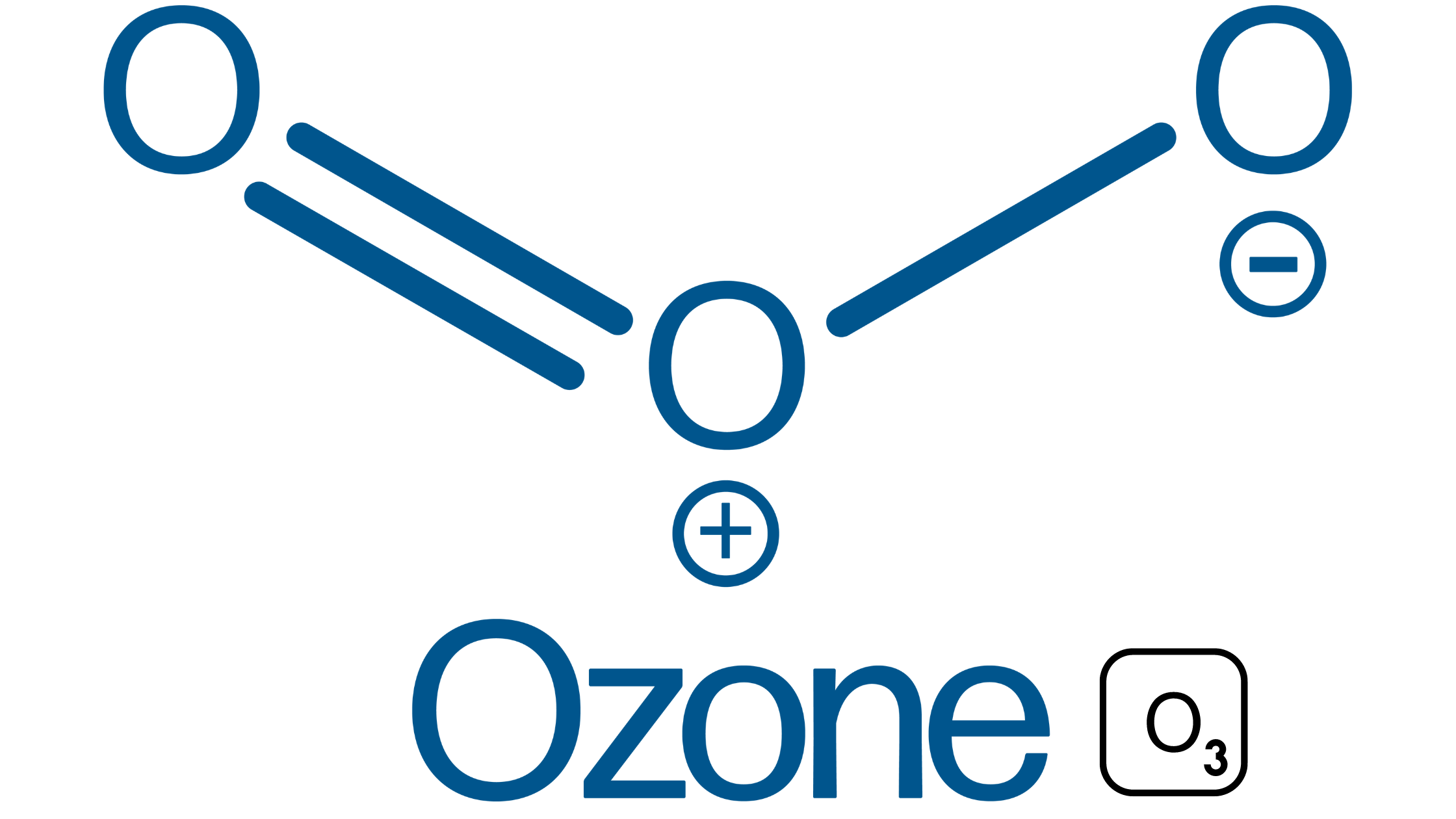Ozone Therapy: A Safe, Natural Treatment for Pets
Ozone Therapy for Pets: What You Need to Know
Ozone, a special type of oxygen, is used as a drug-free pet therapy to fight infection, reduce swelling, and boost healing. When used properly, ozone therapy has very few risks and many benefits for dogs, cats, horses, and other animals.
What is Ozone?
Ozone is just oxygen, like what we breathe, but it has 3 atoms stuck together instead of the normal 2. This extra atom makes ozone a very strong chemical. It wants to come apart and react with other things. The medical grade ozone used for pets must be made the right way from pure oxygen. Ozone generators use electricity to temporarily split apart oxygen molecules and make ozone for treatment. Ozone has a short life. Within 45 minutes, most ozone breaks back down into regular oxygen. This oxygen can then be used by the pet's cells for energy. The temporary extra atom is what gives ozone its healing powers.
Ozone Kills Germs and Infections
The extra atom makes ozone a very strong disinfectant. When ozone hits germs, it totally destroys them. It pokes holes in their outer coat, letting all their insides leak out like a popped balloon. Gross but effective! Ozone also gets rid of the proteins and enzymes germs feed on to grow and spread infection. Ozone therapy disinfects wounds, deals with infections in the skin, ears or bladder, and clears out germs from the mouth and gut. By treating germs at infected sites all over the body, ozone therapy lets pets heal up faster.
Ozone Reduces Swelling and Inflammation
Inflamed areas are often starved for oxygen. Ozone therapy brings an oxygen feast to the party. With more oxygen available, cells make fewer chemicals that cause inflammation. Ozone also prevents fluid from building up so tissues can heal. Ozone therapy can decrease painful swelling from injuries, arthritis, gut issues, and other problems.
Ozone Improves Circulation and Immunity
Better oxygen energizes cells' power plants, aka mitochondria. Ozone helps cells fix themselves faster. Ozone also opens up blood vessels so more blood flows. More oxygen delivered by better circulation gives pets the energy to fight the disease. Use of Ozone also activates special immune cells and antibodies. This germ-fighting boost makes vaccines work better too.
Ozone Helps the Body Heal Faster
From speeding up the healing of injuries, to disinfecting wounds and improving blood flow locally, Ozone is incredibly effective. This oxygen supply allows skin, muscle, bone and other tissues to patch themselves up quickly. Ozone therapy can help wounds, burns, hot spots, and sores in pets heal faster with less chance of infection. After surgery care - Ozone promotes fast recovery post-surgery by reducing inflammation and helping new tissue growth.
Is Ozone Therapy Safe for Pets?
Ozone therapy is very safe when performed properly under a veterinarian’s supervision. The ozone dose is carefully controlled for each pet based on factors like their size and health status. Proper devices, technique and monitoring ensure maximal benefits and minimal side effects.
The most common side effect is temporary coughing or fatigue in some pets. Rarer reactions like vomiting or diarrhea may occur if too high an ozone dose is administered.
Veterinarians minimize risks by:
Using medical-grade oxygen and calibrated ozone generators
Adjusting ozone amounts customized to each pet
Avoiding direct injection of gas into the bloodstream
Using masks or ventilation during administration
Supplementing with antioxidants like vitamin C
Overall, ozone therapy is extremely low-risk compared to pharmaceutical drugs frequently prescribed for pets. Responsible use makes it very safe.
Conditions Ozone Therapy Can Improve
Some of the ways Ozone therapy is used in veterinary integrative medicine:
Skin Conditions
Wounds, cuts, abrasions
Burns, rashes, hot spots
Infections - bacterial, fungal, yeast
Mange, ringworm, parasite infections
Allergic reactions, itchy skin
Abscesses, pain, swelling
Ears and Upper Respiratory
Outer and inner ear infections
Sinus infections, nasal discharge
Upper respiratory viruses
Sore throats, kennel cough
Dental infections, gum disease
Intestinal and Bladder Issues
Bladder infections, cystitis
Diarrhea, constipation, colitis
Intestinal parasites - giardia, coccidia
Gas, bloating, indigestion
Yeast infections, anal gland issues
Immune Disorders
Chronic allergies
Autoimmune disease
Recurrent infections
Lyme disease, joint infections
Low immunity, poor vaccination response
Mobility Issues
Arthritis, degenerative joint disease
Lameness, stiffness, limping
Joint/tendon injuries, muscle strains
Achy hips, elbows, spine
Nerve damage, disc disease
Cancer Support
May slow tumor growth
Help manage pain, nausea
Aid recovery from treatments
Reduce inflammation and fluid
Improve energy and appetite
How Vets Give Ozone Treatments to Pets
There are different ways veterinarians can safely administer ozone therapy to pets:
Insufflation
Ozone gas is pumped into body cavities like the rectum, vagina, bladder, or uterus through a tube. It is absorbed into the bloodstream, which then effectively disinfects and oxygenates the treated area.
Limb Bagging
An ozone-filled bag is placed over an infected leg or paw to disinfect wounds, burns, hot spots, and treat skin infections. The ozone kills germs and oxygenates the tissues to accelerate healing.
Injections
Ozone gas can be directly injected into joints, muscles, and other tissues that need increased oxygen circulation. Ozone injections are used to help heal arthritis, back pain, injuries, and chronic infections.
Autohemotherapy
A small amount of the pet's blood is mixed with ozone gas and then reinjected into the pet. Mixing ozone with blood fires up immune cells and healing markers so they spread out through the body fixing issues and attacking the disease. It's like alerting a security squad to threats popping up everywhere that need to be handled pronto. Ozone lights a fuse that ignites immune defenses ready to clean house and restore order wherever healing is needed.
Inhalation
Pets can breathe in ozone through an inhalation mask placed over their muzzle. Ozonated water or olive oil are gentle ways to deliver respiratory benefits.
Ozonated Water
Sterile saline or distilled water is infused with ozone and used to flush wounds, ears, sinuses, bladders or applied to the skin and paws. Ozonated water kills pathogens on contact while hydrating tissues. Oral administration can support gut and dental health.
Ozonated Oils
Natural oils like olive or coconut oil are bubbled with ozone and applied to the skin, paws, ears and mouth. The oil allows gradual ozone absorption while also providing soothing antioxidant properties.
Ozone Works Well With Other Treatments
One advantage of ozone therapy is that it complements many other healing practices:
Acupuncture
Ozone improves oxygen flow along acupuncture meridians and enhances stimulation of acupoints. Combining ozone with acupuncture leads to better results than either treatment alone.
Chiropractic
Ozone reduces areas of inflammation and muscular tightness that may be caused by vertebral subluxation and nerve impingement. Ozone therapy makes chiropractic adjustments more effective.
Physical Therapy
Ozone hastens healing of damaged ligaments, tendons, and muscles. This allows physical therapy exercises to gradually restore strength and range of motion.
Homeopathy
The extra oxygen metabolism stimulated by ozone may help activate homeopathic remedies. Ozone can amplify the body's response to well-selected remedies.
Nutrition
Ozone increases cellular oxidation. It’s like cells get hyped up when ozone comes around. Their engines start revving fast. While that oxidation effect is what lets ozone do its thing killing germs and powering up cells, too much too fast can be stressful. That’s where the antioxidants swoop in to save the day. Vitamin C, E, and glutathione are clutch. They pump the brakes and keep things from going off the rails. They help maintain balance so cells work with ozone but stay healthy. Quality nutrition supports ozone therapy.
Herbal Medicine
Ozone is awesome because it can help get all the good stuff from herbal remedies absorbed into the body better. When ozone opens up cells it lets more of the compounds from herbs in so they can do their job. Herbs are great too because they give antioxidants that keep everything balanced. Ozone wants to oxidize stuff, which kills germs but can be too much. Herbs are like "chill bro, I got you covered." They help soak up the extra ozone so cells stay happy. Using herbs and ozone together is a match made in heaven. The ozone helps the herbs work even better while the herbs make sure the ozone doesn't go overboard. The perfect pairing!
By combining ozone therapy with complimentary integrative therapies, we are able to encourage faster healing and overall wellness in pets.
Moving Forward With Ozone Therapy in Integrative Veterinary Medicine
Ozone therapy has been used for over 200 years, but it has only recently started gaining widespread use in the veterinary world. Clearly an effective drug-free option for a variety of health issues, there is greater interest and understanding now of its applications and benefits.
Studies and research are still underway, but with such positive results already, ozone therapy has earned an important place in a safe alternative therapy for pet wellness. With responsible administration focused on each pet's needs, ozone therapy can become a cornerstone of caring holistic veterinary practice.
Arya Animal Acupuncture offers Ozone Therapy for pets. We are excited to add this amazing solution to our integrative veterinary arsenal for quicker healing of our pet patients!




